Exploring African Violets
Since their introduction to the U.S. in the late 1800s from Eastern Africa (via Germany), African violets have thrived in homes across the country, earning their reputation as one of America’s most popular houseplants. Millions of these marvelous flowering plants are sold stateside each year.
Are African violets part of your current retail offering? They can be a relatively easy and quick-turn choice for impulse sales.
For instant sales, ask your supplier about retail-ready plants in mini (2-inch) and standard (4-inch) sizes.
Let’s dig into some details to help you and your retail customers be successful with this colorful, traditional favorite.
Cultivars
The color range of African violet flowers is broader than you may think. The spectrum includes red, blue, purple, lavender, pink, white and bicolor blooms.
Leaf surfaces may be rounded or curly and some may be variegated. The possibilities are endless for a captivating retail display.
Plant Care
African violets can thrive for decades with just a bit of TLC. Use trained team members and in-store signage to educate your customers on best practices to care for their new plants. A little know-how can protect their investment and enhance their enjoyment for many years to come.
Ideally, African violets thrive in conditions of early morning sunlight (four to six hours) and room temperatures up to about 78° F during the daytime with a low around 68° F at night.
Humidity plays an important role; African violets need between 50 and 70 percent relative humidity for optimum flowering.
When it comes to watering, African violets are finicky. Specifically, they don’t like to be kept too wet; excess moisture prevents air from reaching their fine roots. Be sure your customers know to let their African violets dry down a bit between waterings. When the top of the soil feels dry to the touch, it’s time to water.
Consumers should also be careful to keep African violet foliage dry when watering. Even slight amounts of water on the leaves and flowers can cause damage and spotting.
Overhead watering may be done when plants are young; subirrigation is recommended as plants fill out, to prevent damage to flowers or foliage. In either case, consumers should use standing water at room temperature that has allowed any high chlorine content to evaporate.
Fertilizing
African violets thrive with light feedings using a balanced fertilizer. Numerous options are available for retail sale, including the popular Jack’s Classic 12-36-14 African violet water-soluble plant food, Bonide’s 7-10-7 liquid African violet plant food, Espoma’s Violet 1-3-1 liquid plant food and the consumer favorite, Schultz African Violet Plus 8-14-9 food.
Soil
Maintaining a good soil level with African violets is important to prevent the plant stem from hardening and making the plant mostly upright as the stem elongates.
Transplanting African violets should be easy for consumers. Simply remove the plant from the container, careful to keep the root ball intact. Using sharp scissors or a knife, cut through the bottom quarter of the soil straight across. Trim the soil sides back about a 1⁄4 inch. Lightly scrape the sides of the stem from just under the bottom of the lower leaves and return to the pot. Backfill with a good African violet soil mix up to the lower leaf and lightly tamp soil mix down.
Some terrific videos are available on YouTube with step-by-step instructions of the transplanting process.
For retailers looking to stock African violet potting mixes, several excellent options are available. Espoma, Hoffman, Premier and Sun Gro all offer quality African violet mixes for retail. These are all formulated to provide excellent root development and facilitate proper drainage.
Problem Solvers
African violets adapt to varying room conditions. One of the few problems they may encounter is powdery mildew, especially when excessive humidity levels and overwatering occur.
A new, unique remedy from Monterey Chemical is called Complete Disease Control. This biofungicide/bactericide is derived from the Bacillus amyloliquefaciens strain D747. The indoor-safe product can be used for African violet disease control without wetting leaf surfaces, if applied as a soil drench.
Selling points for both retailer and consumer include the following: indoor- (and outdoor-) use fungicide that is OMRI-listed, recommended for organic gardening and is available in both ready-to-use and concentrate types.
Retail Sales Success
Create a selling table using just African violets and accessories together. You may include small 3-to-5-inch ceramic pots, clay pots or even plastic. Consider stocking a mix of different plant sizes, both standard and mini types, for the potential of multiple uses and mass appeal. Use color blocking to group plants for maximum visual impact.
Consider displaying using carts and lights that the homeowner may be using at home, or might want to purchase. Such lighting can help really bring out the colors of the flowers and foliage too!
Crates are also great for keeping these choices organized and stacked vertically for consumer appeal. Don’t forget to keep your display well stocked to maintain an abundant, ready-to-sell look.
Additional Resources
The African Violet Society of America is a wonderful resource for anyone interested in learning more about African violets or sharing their passion for these plants.
Headquartered in Beaumont, Texas, the society operates on a local level via a dozen affiliate clubs throughout North America. For more information or to connect with the local club nearest you, visit www.avsa.org.

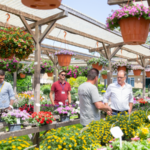
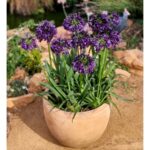
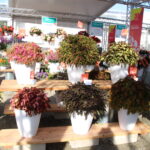
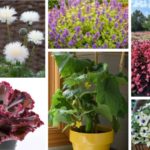



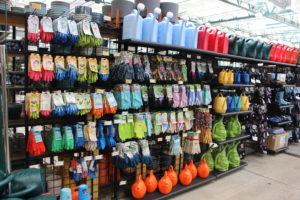

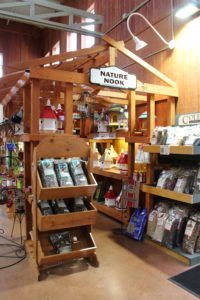

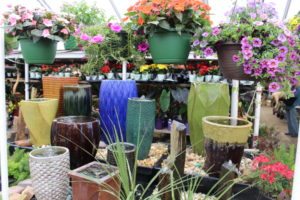

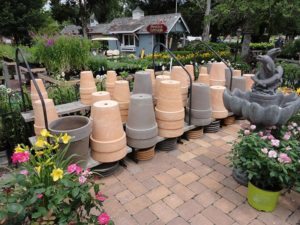



 Videos
Videos





